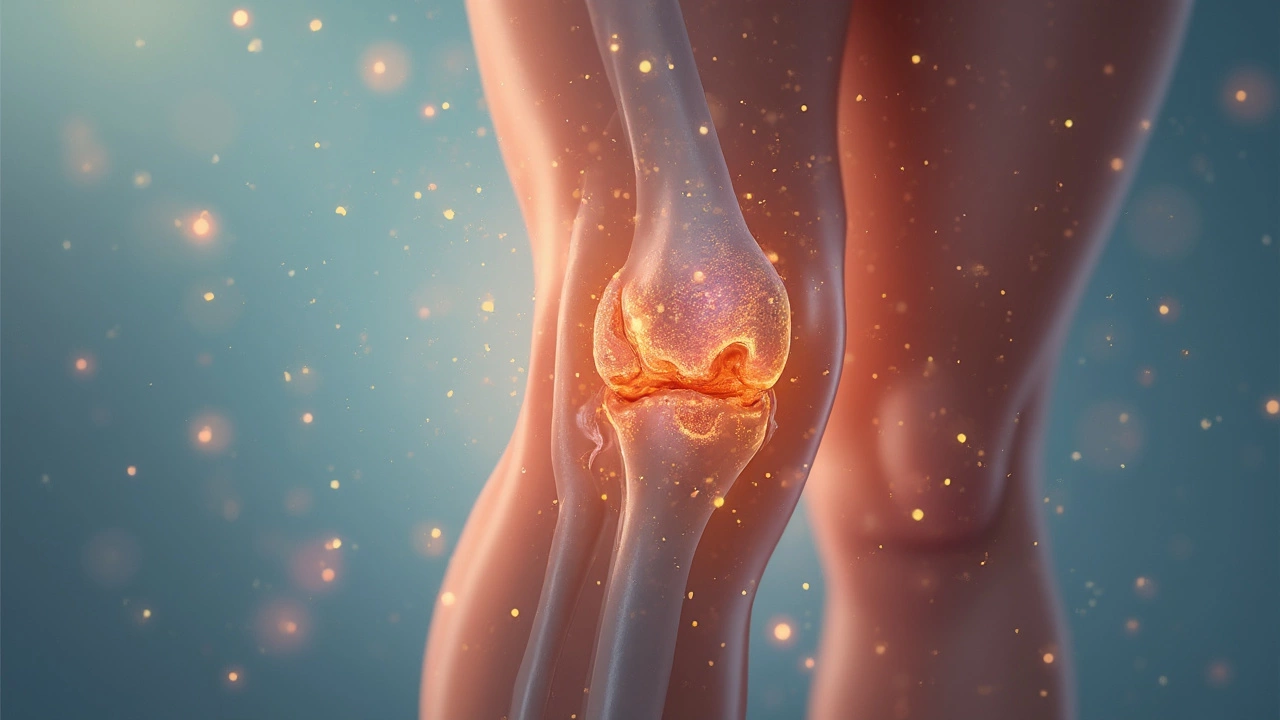
If you’ve just had knee replacement surgery, you’re probably wondering about all the things you used to do without thinking—like kneeling down to pull out weeds, play with your kid, or hunt for something under the couch. Trust me, you’re not alone. The kneeling question stumps almost everyone after surgery.
Here’s the thing: doctors often say it’s safe to try kneeling once your knee heals, but nobody tells you how weird it might feel. Numbness right over the scar, a tight or tender sensation—these don’t mean your implant’s going to pop out, but they definitely mess with your confidence. And honestly, a lot of people just avoid kneeling because it’s uncomfortable, not because it’s actually risky.
So, can you ever kneel again? The short answer: yes, most people physically can, but it feels strange and takes some patience. The long answer? Well, that depends on your pain tolerance, your workout with your physical therapist, and a bit of trial and error at home.
- Why Kneeling Feels Different After Surgery
- What Doctors and Studies Really Say
- Tips to Safely Try Kneeling Again
- Smart Moves for Daily Comfort
Why Kneeling Feels Different After Surgery
Kneeling after knee replacement surgery just isn’t the same as before. Here’s why: doctors have to cut through layers of skin, fat, and sometimes muscle to get to your knee joint. But the biggest thing they mess with is the nerves right under your skin in front of your knee. After surgery, most people notice that weird numb, tingly, or stiff feeling—often right on or around the scar.
The new knee joint is made of metal and plastic. It’s strong, sure, but it doesn’t have the same natural cushion as the cartilage you were born with. So when you try to lean on it, there’s much less padding between you and the floor. This can make kneeling feel more like kneeling on a dinner plate than a pillow.
Check out these facts from a big review of patients one year after surgery:
| Feeling When Kneeling | % of Patients (1 Year Post-Surgery) |
|---|---|
| Numbness or tingling | 85% |
| Discomfort or pressure | 72% |
| Pain that limits ability | 20% |
Nerves can slowly grow back, but they might never feel exactly like they used to. Even if your knee is technically healthy and strong, these weird sensations stick around for most people. That’s the main reason you hesitate or feel odd about getting back down on the ground after surgery.
Some folks say it feels like there’s a thin piece of cardboard under the skin, blocking sensation. Others notice their knee won’t bend as comfortably, or they worry about damaging the implant (which, don’t stress, is rare if you follow your doctor’s advice).
Bottom line: it’s less about “can” and more about “how does it feel”—and that part is different for everyone. No shame in moving slow, listening to your body, and figuring out your new normal.
What Doctors and Studies Really Say
If you ask most surgeons about kneeling after a knee replacement, you’ll usually hear that the new joint is solid enough for it. The implant itself is built to handle daily living and way more pressure than just basic kneeling. So why does everyone sound so unsure about it?
Here’s what’s actually going on: a 2023 study from the Journal of Arthroplasty found that less than half of people (about 40%) feel comfortable kneeling after a knee replacement, even years later. But here’s a twist—almost 70% can physically do it if they try. The biggest blockers? Weird sensations, numbness at the incision, and good old fear that kneeling will hurt the new joint.
Doctors say the feeling on the surface of the knee often comes back really slowly. Some people get used to the strange feeling and kneel anyway, while others don’t bother. Most of the time, the “can I kneel?” answer is more about what your brain and skin feel than what’s actually happening inside the joint.
| Study/Source | People Comfortable Kneeling | People Who Can Kneel |
|---|---|---|
| Journal of Arthroplasty (2023) | 40% | 70% |
| BMJ Open (2022) | 45% | 68% |
Doctors sometimes disagree about whether to encourage kneeling, but nobody says it will wreck your implant. The American Association of Hip and Knee Surgeons says kneeling is safe after healing, usually around three to six months post-surgery, but it might always feel odd. They recommend using a soft mat and easing into it, so you never shock your new knee with sudden pressure.
So, when you hear about people never kneeling again, remember—it’s more about comfort, not danger. If you want to try, you’re in good company. A lot of folks just start by kneeling on something soft and waiting to see what happens.

Tips to Safely Try Kneeling Again
Ready to give kneeling another shot after your knee replacement? The good news: most implants are built strong. Still, your body needs time to adjust, and there are smart ways to make the process less awkward and painful.
First off, don’t rush it. Most doctors say to wait at least 3-6 months after surgery before you even start experimenting with kneeling. Healing varies by person, so listening to your own knee matters way more than following a calendar.
- Start slow and use padding. The first time you try, grab a soft pillow, yoga mat, or even a folded towel. Hard floors multiply the discomfort. Some folks keep a gardening pad at home for daily stuff. A little cushion goes a long way.
- Practice the motion, not just the hold. Instead of dropping straight to your knees, ease down using your hands for support. Put as little weight as possible on your replaced knee at first. Just getting the movement back often helps nerves settle down.
- Partial kneeling counts. There’s no rule saying both knees have to hit the floor. Try half-kneeling, with your good leg up, like taking a knee during a huddle. It’s easier on the new joint and still gets the job done for tasks like tying shoes or cleaning.
- Check with your physical therapist. If you’re working with one, ask for kneeling drills or specific exercises. They can spot if your muscles or balance need more work before you start kneeling at home.
- Watch for numbness and weird sensations. Tingling, tightness, and numb spots are super common, but if you get sharp pain or swelling, stop and check with your surgeon.
The first few tries might feel stiff or strange. Don’t be surprised if it’s more awkward than painful. For most people, careful practice and using props help a lot. Patience, honestly, is the real trick here. If kneeling never gets truly comfy, you’re not failing—your body’s just letting you know its new limits.
Smart Moves for Daily Comfort
If kneeling is off the table (or just still feels weird), there are plenty of ways you can stay comfortable and handle your daily routine after a knee replacement. Jumping back into old habits can make your new knee ache, but a few new moves can make a big difference.
First up, get smart about padding. Whether you’re sorting laundry, gardening, or fixing something low, use a thick foam pad, a folded pillow, or even a rolled-up yoga mat under your knees. Pads take the edge off that numb pressure right on the scar.
Now, let’s talk about posture. A lot of folks crouch too low or lean forward, which puts strain not just on your knee but on your back too. Try kneeling on the opposite knee, or shift your weight to your hands (like a modified crawl). Some people find sitting on a low stool easier for floor-level chores—no knee pressure at all.
Here’s a handy breakdown of side-by-side comfort moves:
| Task | Old Habit | New Comfort Move |
|---|---|---|
| Garden Weeding | Kneeling directly on grass | Kneeling pad or low bench |
| Searching under beds | Knees on hardwood | Pillow, or slide a towel under knee |
| Praying or yoga | Weight centered over both knees | Weight forward on hands or sit on heels |
If you want to kneel but fear the numbness, slowly increase your time: start with ten seconds, then ease up for a break, and repeat. Short, daily tries help more than one long painful session.
- Stretch quads and calves before kneeling—looser muscles equals less tugging on your knee area.
- Take an anti-inflammatory, like ibuprofen, if your doctor says it’s safe, before tackling kneeling-heavy activities.
- If your skin feels weird, try a pair of knee sleeves or thick pants. The fabric dulls the odd sensations and adds a little confidence.
Also, don’t ignore your body. If kneeling hurts beyond mild discomfort, there’s no shame in skipping it. Plenty of folks report they rarely kneel after knee replacement and get by just fine. But for little kids, gardening, or fixing things, these small changes help you stay active—and a lot more comfortable.





Rohan Talvani
I am a manufacturing expert with over 15 years of experience in streamlining production processes and enhancing operational efficiency. My work often takes me into the technical nitty-gritty of production, but I have a keen interest in writing about medicine in India—an intersection of tradition and modern practices that captivates me. I strive to incorporate innovative approaches in everything I do, whether in my professional role or as an author. My passion for writing about health topics stems from a strong belief in knowledge sharing and its potential to bring about positive changes.
view all postsWrite a comment